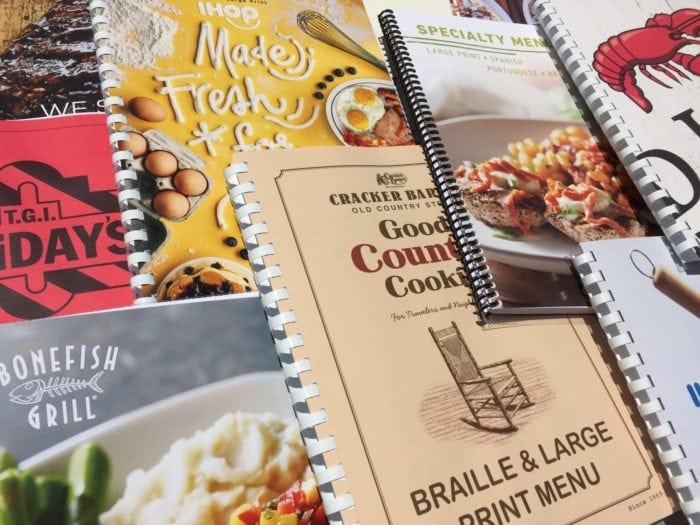Restaurant Accessibility: Serving Diners with Visual Disabilities
Published onWho doesn’t love going out to eat? Quality time with friends and family, great food, and no dishes to clean up! But for the millions of Americans with blindness or a visual disability, going out to eat can be an exercise in patience.
If you’re a restaurant owner, you know that customer experience is just as important as ingredients. When it comes to improving the experience for your customers with visual disabilities, we’ve got the recipe.
It starts with service.
Just because a person has a visual disability, doesn’t mean they shouldn’t expect, and receive, great customer service. But, sometimes, a server’s inexperience can lead to misunderstandings, or worse, unintended discriminatory behavior.
Make sure your servers know that guide dogs are not pets. They must be permitted into the restaurant with their owner. Also, guide dogs are hard at work and should not be touched or played with.
Give every guest the chance to speak. When it comes time to order, every person at the table should have a chance to ask questions and select their meal. If a person with blindness or a visual disability needs help, they’ll ask..
Communicate often. Some restaurants take pride on service that is nearly invisible, whisking away plates and refilling water glasses with stealth. But, this can be problematic for guests with a visual disability. Servers should verbally communicate what they’re doing, in a nonintrusive manner.
Earn 5 stars for accessible menus.
Part of the experience of dining out, especially somewhere new, is seeing what’s on the menu! That expectation is the same for people with blindness, but unfortunately, many restaurants don’t offer accessible menus.
You can comply with ADA laws, and win points with all your diners by providing menus in accessible formats like braille and large print. You may be surprised how many non-disabled customers prefer a large print version when available!
If you have an online ordering system, make sure your menu there is accessible, too. PDFs, for example, aren’t accessible to screen reading technology in their standard format. They need to go through a process called Section 508 remediation, that meets WCAG 2.0 AA Standards.
Another great accessible option is audio. Again, this isn’t just for people with blindness, visual disability, or low vision. People with a reading disability can also benefit from audio menus.
When you make the decision to provide accessible menus, don’t go for the value meal option. Remember, experience is just as important as ingredients. Choose an accessible document partner who will analyze your menu and structure the accessible formats in ways that make sense for your patrons. High quality menus save everyone time and can increase sales. When a menu is well-organized, the customer can navigate through it quicker and focus on what he or she really wants to be looking at. Also, when a person can take their time browsing through the menu, they are likely to order more accompaniments (like beverages and appetizers).
If you don’t have an accessible menu (yet), here’s a tip.
Generally, when a person is in need of an accessible menu and one isn’t available they will ask their companion to assist them. However, when someone is dining alone they might need some assistance. By law the customer has the right to equal access to the information on the menu. Many establishments will attempt to have the menu read to a person who has a visual disability or is blind; this is time consuming and limiting the chance for the patron to review certain selections. Providing an accessible format will provide the patron with the meal selections they want, and save the establishment time and money in labor.
If a person with a visual disability asks for assistance with the menu, train your servers to start by asking, “Are you in the mood for anything specific this evening? Is there anything you particularly dislike or should avoid, like a shellfish allergy?” This will let the server know where to start, and what to skip, on the menu.
Have your staff practice reading the menu items so they’re comfortable doing so. Also, be sure to include the prices in the descriptions. Nobody likes a surprise in the check or on their palate.
Ready to start serving everyone?
Categorized in: Accessibility, Restaurants
This post was written by







Comments are closed here.